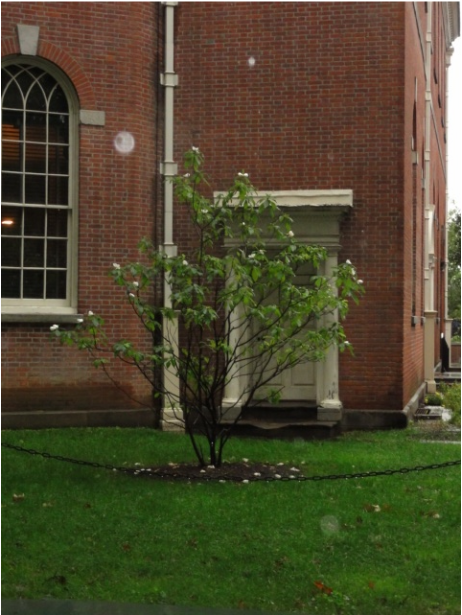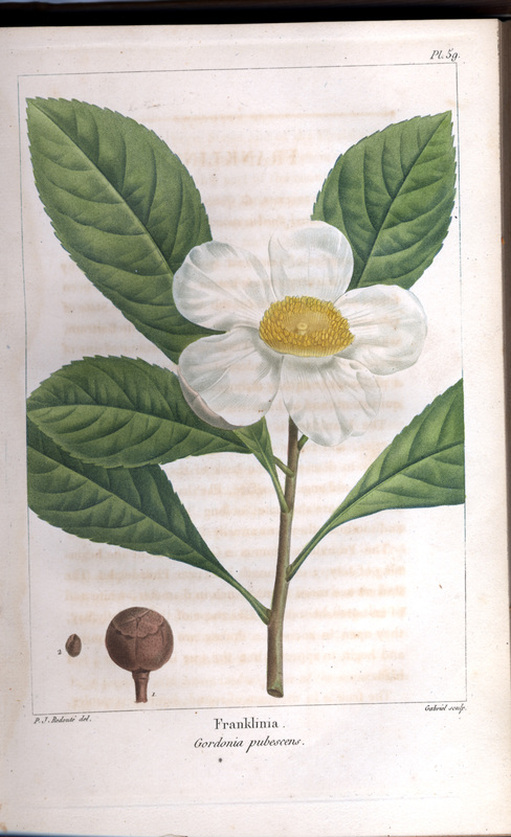The next lost landscape is a tree, an example of a Franklinia.
To find the Franklinia, turn toward the rear of Congress Hall, which is located at the corner of Chestnut and 6th. The Franklinia is behind the security barriers, near the rear eastern corner of the building. This is a young Franklinia; the mature trees can be two stories high.
To find the Franklinia, turn toward the rear of Congress Hall, which is located at the corner of Chestnut and 6th. The Franklinia is behind the security barriers, near the rear eastern corner of the building. This is a young Franklinia; the mature trees can be two stories high.
Franklinia would be extinct if not for the Philadelphia botanists John and William Bartram. John Bartram discovered a Franklinia in October 1765 growing by the Altamaha River close to present-day Darien, Georgia (about 60 miles south of Savannah); his son William later collected seeds to cultivate at their Philadelphia garden. They named the species for their friend Benjamin Franklin. There are now no Franklinias growing in the wild, and all the Franklinia trees living today are believed to be descendants of the ones collected by Bartram.
Philadelphia botanist William Bartram described the Franklinia in this book as “a flowering tree, of the first order for beauty and fragrance of blossoms.”
Top: Franklinia behind Congress Hall, by the author.
William Bartram, Travels through North & South Carolina, Georgia, East & West Florida, 1st ed., 1791
Want to revisit this page later or view the pages for all the sites that are part of Ghost Gardens, Lost Landscapes? Click here. Ghost Gardens explores lost, vanished, or forgotten Philadelphia gardens, landscapes, and animals related to those showcased in Of Elephants and Roses, an exhibition by the American Philosophical Society Museum on view until December 31, 2011 (admission is free). Ghost Gardens was funded by The Pew Center for Arts & Heritage through the Heritage Philadelphia Program. Ghost Gardens was created by Erin McLeary and is maintained by the American Philosophical Society Museum.
William Bartram, Travels through North & South Carolina, Georgia, East & West Florida, 1st ed., 1791
Want to revisit this page later or view the pages for all the sites that are part of Ghost Gardens, Lost Landscapes? Click here. Ghost Gardens explores lost, vanished, or forgotten Philadelphia gardens, landscapes, and animals related to those showcased in Of Elephants and Roses, an exhibition by the American Philosophical Society Museum on view until December 31, 2011 (admission is free). Ghost Gardens was funded by The Pew Center for Arts & Heritage through the Heritage Philadelphia Program. Ghost Gardens was created by Erin McLeary and is maintained by the American Philosophical Society Museum.




